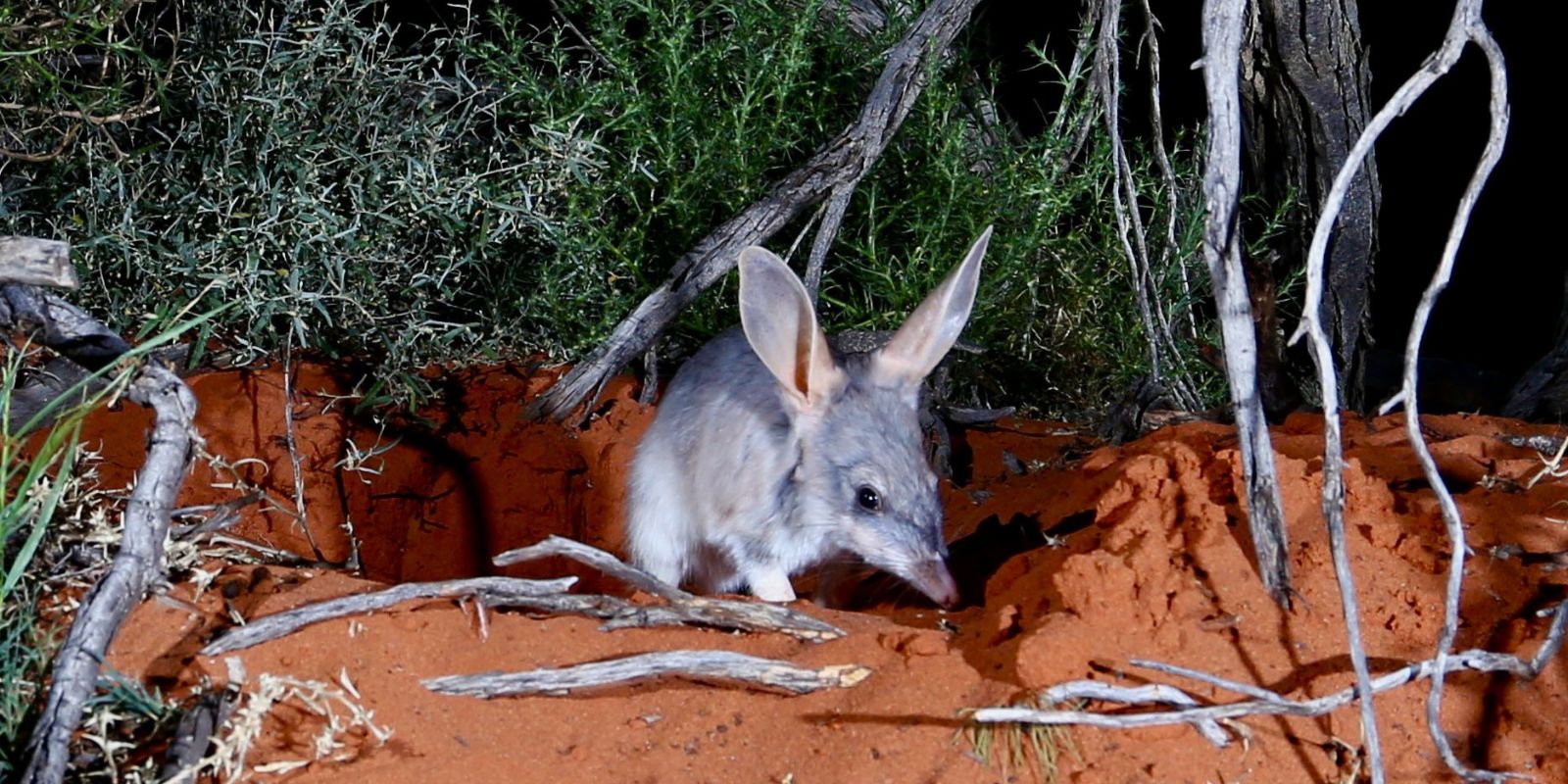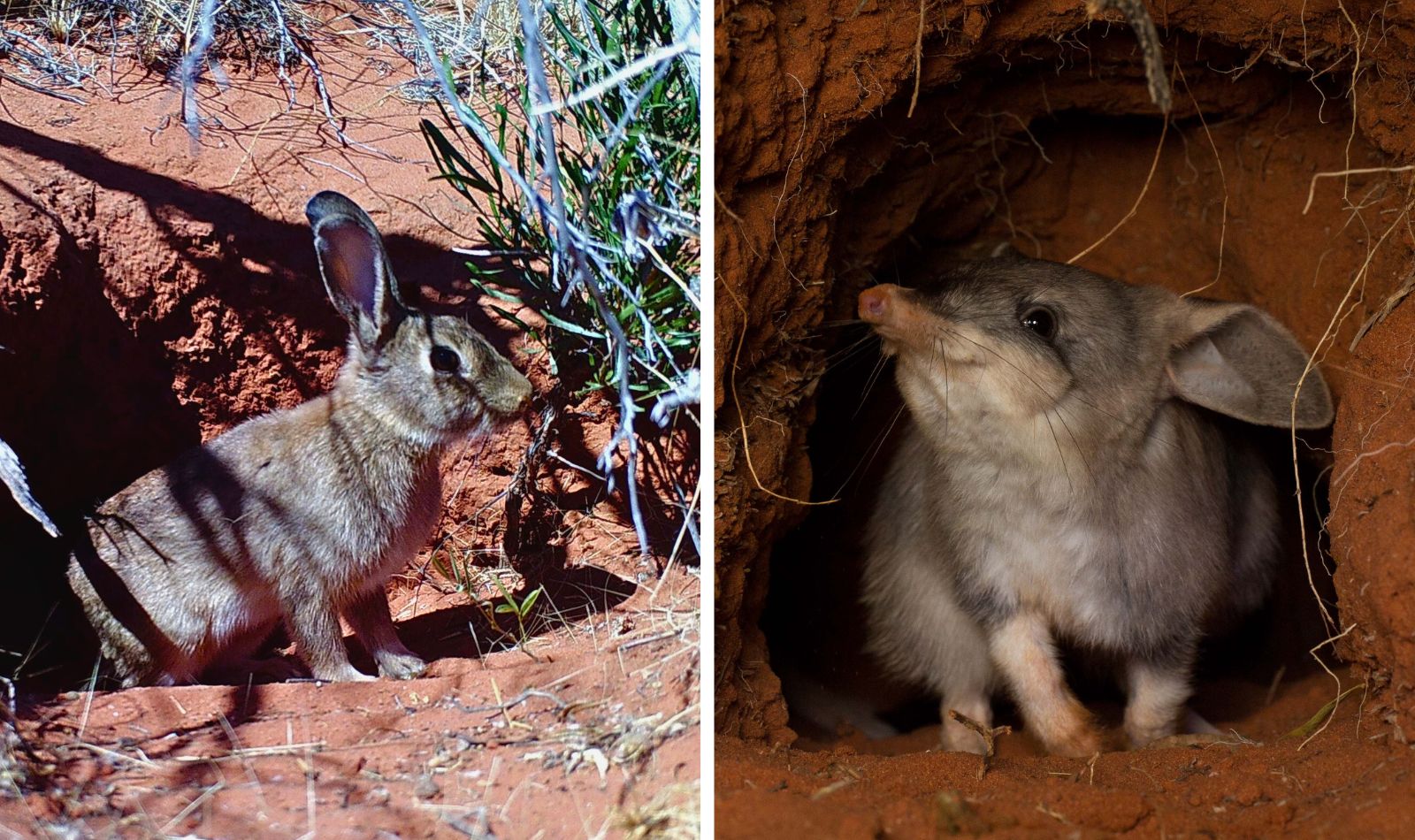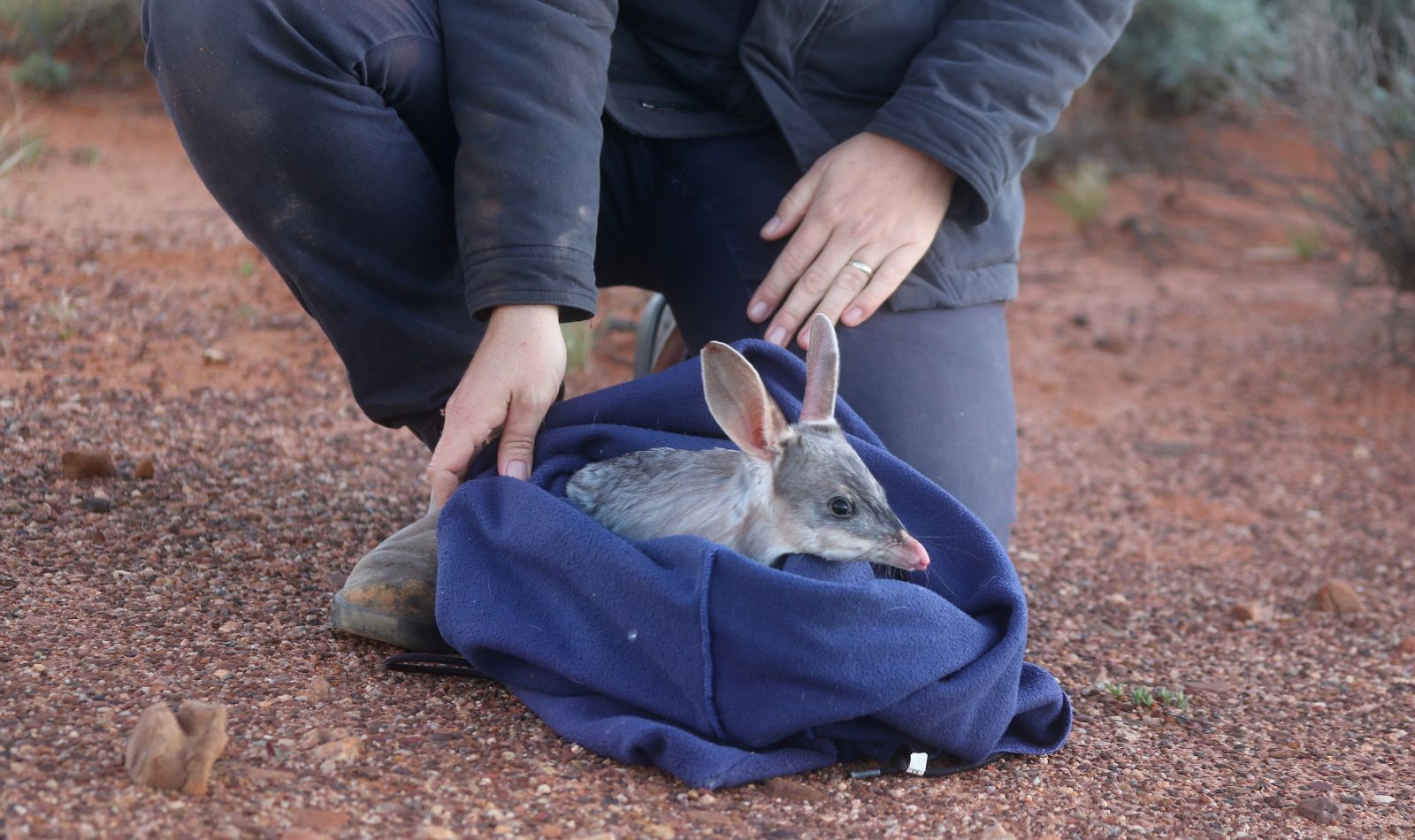Can bilbies and rabbits beat the heat?
Arid Recovery
07 April 2025

UNSW PhD candidate Jack Bilby digs into how bilbies and rabbits respond to extreme heat, and what it means for the future of desert wildlife.
Heatwaves are becoming hotter, longer, and more frequent, especially in arid regions like the Australian outback. These climate extremes are predicted to hit hardest in the very ecosystems where native mammals have already faced the greatest extinction rates, so how are animals coping with this increasing heat stress in the wild?
Surprisingly, we don’t actually know much. While plenty of lab studies have examined how animals react to rising temperatures, wild animals don’t live in laboratories. We have very little information on how they actually behave during real-world heatwaves. With nocturnal burrowing species, their cryptic nature adds additional challenges to this area of research. University of NSW PhD student, Jack Bilby (yes, that is his real last name) is trying discover how native and invasive mammals respond to extreme heat in the wild. Specifically, he’s comparing one of Australia’s much-loved native species, the greater bilby (Macrotis lagotis) with the invasive European rabbit (Oryctolagus cuniculus).
Bilbies and rabbits might seem worlds apart, but they actually have a lot in common. They’re both arid-zone dwellers, both burrowers, both long-eared, and both, somewhat oddly associated with Easter. But their conservation stories couldn’t be more different; bilbies once roamed over 70% of Australia but are now restricted to about 15%. Whereas, rabbits have rapidly expanded and now cover 70% of the continent. They may look similar and live in burrows, but only one is supposed to be here. Photo credit: J. Vink
They may look similar and live in burrows, but only one is supposed to be here. Photo credit: J. Vink
So how do they each handle the heat?
To find out, Jack and the Arid Recovery team are using a suite of wildlife tracking tools to monitor how bilbies and rabbits respond to heat. Animals are fitted with a combination of lightweight devices including GPS and VHF transmitters to track their movements and shelter sites, accelerometers to record fine-scale behaviours like resting, digging, and running, and then data loggers to record the temperature and humidity that each animal experiences throughout the day. Every ten minutes, these loggers collect environmental data, giving insight into the microclimates bilbies and rabbits are choosing, such as the temperature and humidity deep in a burrow, or on the surface. It’s a bit like giving each animal a fitness tracker, but one that also records the weather around them. Together, this technology builds a detailed picture of how each species copes with extreme heat in real-world conditions.
 Jack Bilby (right) celebrating Arid Recovery at Government House with our Land Conservation Manager, Nathan Manders and Team Kowari President, Molly Barlow.
Jack Bilby (right) celebrating Arid Recovery at Government House with our Land Conservation Manager, Nathan Manders and Team Kowari President, Molly Barlow.
Preliminary results are already revealing some fascinating differences. During the hottest parts of the day, bilbies consistently experience cooler and more humid conditions than rabbits. This suggests they’re retreating deeper into their burrows to avoid the heat, while rabbits may be sticking closer to the surface or burrow entrance. That difference matters because it could mean bilbies are better protected from short, sharp heat spikes, but may suffer if they cannot cope with the high nocturnal temperatures they are exposed to during foraging, particularly during prolonged heatwaves. Meanwhile, rabbits may be relying more on actively thermoregulating via evaporative cooling, making them more at risk during dry years when water is scarce.
 Bilbies are released with a tail transmitter and are radio-tracked during and after heatwaves.
Bilbies are released with a tail transmitter and are radio-tracked during and after heatwaves.
Photo credit: M. Stokes.
Ultimately, Jack’s work will feed into climate models, which will help to predict how bilbies and rabbits will fare under future climate scenarios. By combining real-world behavioural data with thermal modelling, Jack aims to understand which species are more vulnerable in a changing climate.
The Australia’s arid zone will continue to heat up. Studies like this don’t just tell us how animals respond to climate extremes, they help us figure out how to manage ecosystems and protect vulnerable native species before it’s too late.